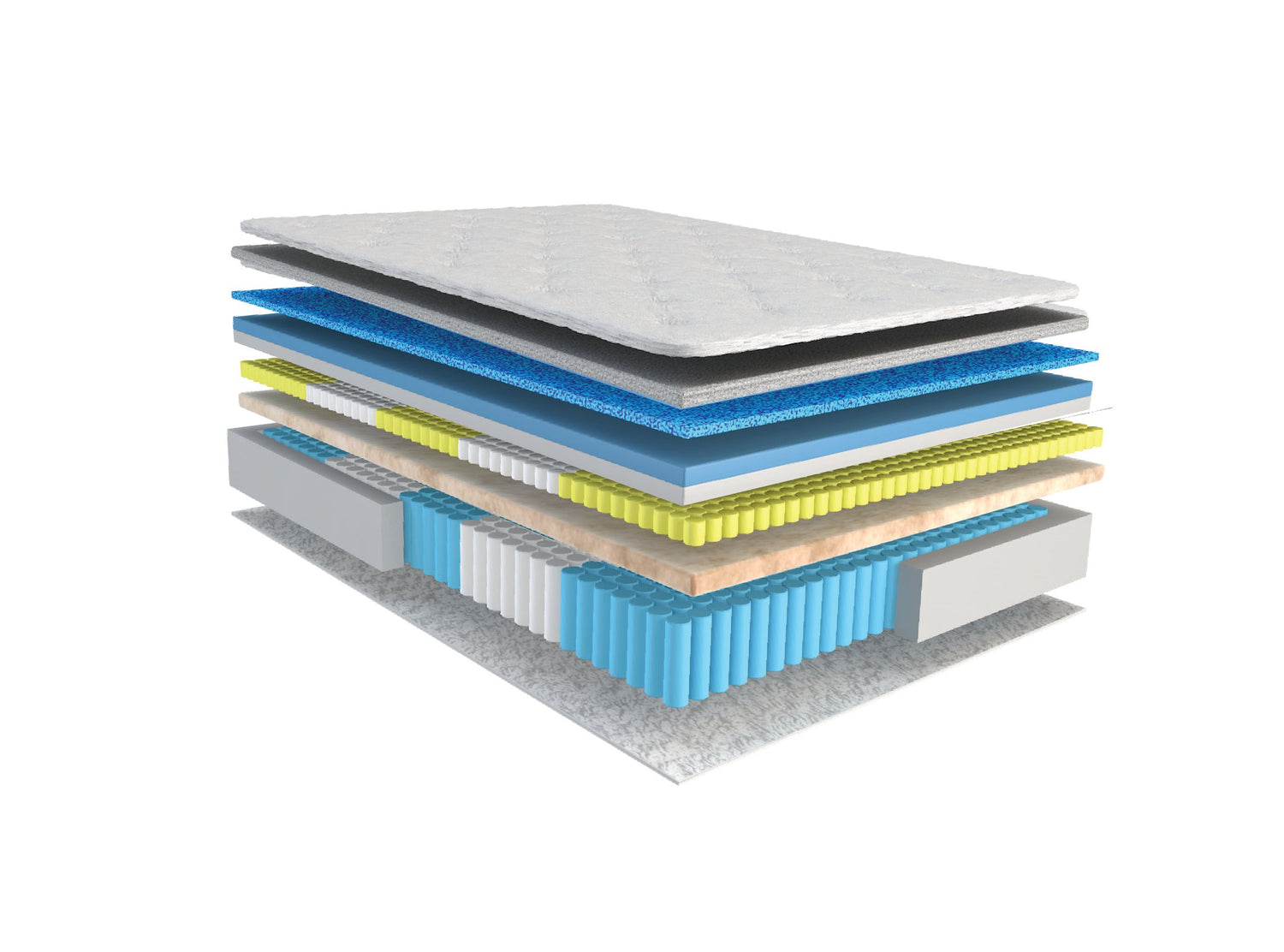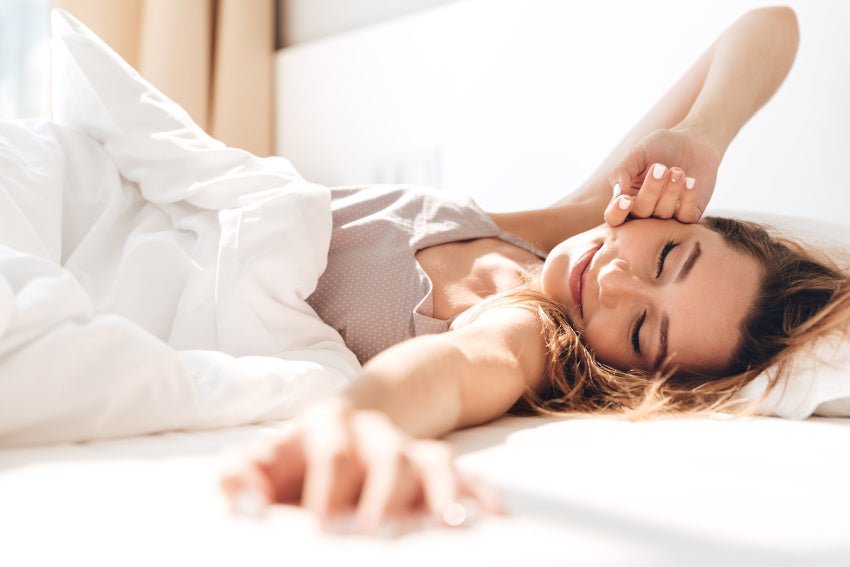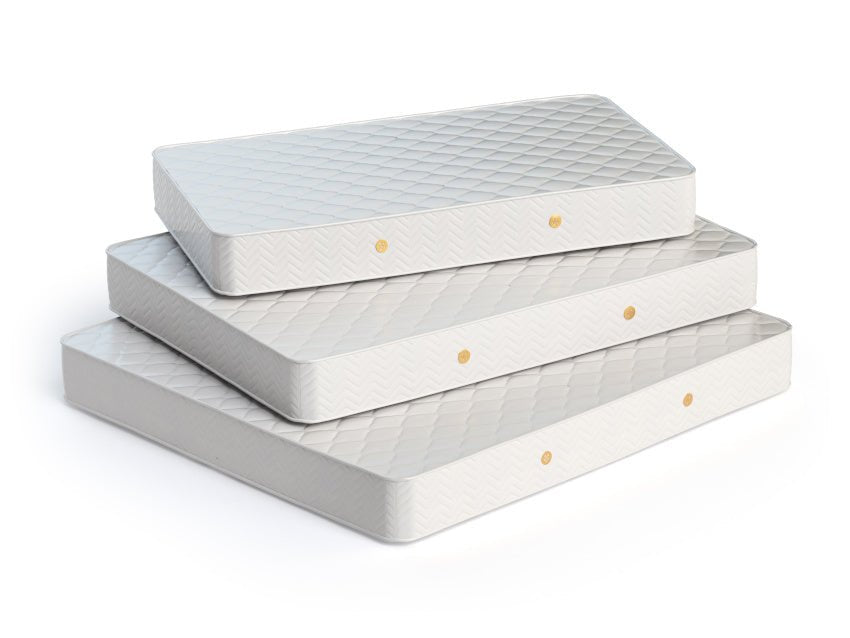Things you need to know about mattresses
When investing in 10 to 15 years of quality sleep, it’s important to know what’s inside the mattress you’re buying. Essentially a mattress contains three functional components; the support component, the comfort component and the base. Each component can be made of one or several materials, and occasionally there are mattresses where the same material is used for both support and comfort, latex or visco elastic.
Your choice of components should be made based on how you feel when you lie on the mattress, how long you want the mattress to last, whether you are disturbed by your partner’s movements at night, and whether you have any special needs (e.g. pressure and pain relief).
An individual choice
With so many mattresses to choose from, at Mattress & Pillow Science we can advise on the best mattress to meet your needs, understanding any health and sleeping issues you may have, and how firm you like your mattress to be. And we encourage you to try a mattress for at least twenty minutes – or as long as you wish - before buying.
Mattress - Support Components
- Pocket coils, continuous or innerspring; latex foam and visco-elastic/memory foam materials are used, either singularly or in combination, to provide support and to promote neutral spinal alignment,
Mattress - Comfort Components
- For comfort and pressure relief, dacron, foams, latex, visco-elastic/memory foam, gel and wool are used individually or blended together to provide different levels of comfort, from a softer, plush feel to a firmer feel.
MATTRESS SUPPORT COMPONENTS
POCKET SPRING
How it’s made
Pocket Spring Mattresses (or Pocket Coil Mattresses as they are also known) contain units that consist of a group of tempered steel coils that have been individually inserted and sealed into a durable material pocket or sock. Each sock/pocket is then fused to its neighbour until a large rectangle of pocketed springs results. This unit forms the backbone of a pocket coil mattress. Pocket coils come in standard or micro sizes, and many of these units also feature different zones of coils, providing support and some pressure relief.
- 3 zones - the springs towards the feet and the head of the sleeper are made of more responsive lighter gauge steel which compresses with mild to moderate force. The springs in the centre of the mattress where the most support is needed under the hips and lower back, are a lighter gauge steel which gives extra support and longevity to the mattress at this level.
- 5-9 zones - some manufacturers use up to 9 zones within their mattresses. The springs are zoned to provide some pressure relief where needed, i.e. at the shoulder and hip areas, using a lighter gauge steel, and a firmer gauge steel to other areas
- Micro pocket coils provide superior pressure relief with each micro coil independently pocketed.
- Dual spring mattresses provide additional strength, with pocket coils sitting over a continuous coil base. Ideal when extra strong support is required.
- Twin spring mattresses comprise a pocket coil within a pocket coil. This superior pocket coil mattress provides extra strength and additional support, if required, with twice the number of springs.

How a pocket coil mattress feels
Pocket coil mattresses redefine the ‘inner spring’ bed. Since each coil/spring is isolated from its neighbour, the mattress effectively has independent suspension which means the springs last longer and more importantly, partner disturbance is almost completely eliminated – a great choice for restless sleepers! Pocket coil beds invariably feel slightly firmer than Latex support components, and they always need some comfort component laid on top of them. This comfort component may be in the quilting over the springs, or in the pillow top.
Pocket coil mattresses are far more advanced, and technologically far superior to standard innerspring mattresses.
Added Benefits
Pocket coil mattresses are light, very cool, and do not need to be turned.
INNERSPRINGHow it’s made
Essentially an innerspring uses single steel which is woven in various ways and may be knotted or bound together. A thick wire frame is bound along the entire edge of the unit of coils, closing them in to a typical mattress shape. In some cases a single long thread of steel is used to make each coil so that all the coils are naturally joined at their base.
BonnellBonnell is the most common innerspring system, where the wire forms a knotted, round-top, hourglass-shaped steel wire coil. These are wound and bound together with cross-wire helicals.

Continuous
A Continuous coil spring system is a continuous piece of wire which is configured into rows of springs.

How an innerspring mattress feels
Innerspring mattresses cushion pressure points effectively, and give reasonable support but have serious limitations, namely, the springs fatigue over time because they’re all connected to one another - this give the ‘roll-in’ effect where you and your partner end up sleeping in a ditch in the middle of the mattress. There is also a high degree of ‘springy-ness’ and thus lots of partner disturbance.
Added benefits
Usually a lower priced option, and if partner disturbance is not a consideration, may be ideal for the guest room or younger children.
TRADITIONAL FOAMS – POLYURETHANE (PU) FOAM
How it’s made
Polyurethane (PU) foam is used extensively in the furniture and bedding industry because it is easy and fast to reproduce, yet maintains a high durability. Polyurethanes are liquid ‘plastics’ which when mixed together with a reagent produce a ‘closed-cell’ foam which can be moulded or laser-cut into a desired shape. Depending on the type and quantity of PU used, both the firmness and density can be altered. Thus firmer PU foams are used exclusively for support components whereas softer PU foams are used for comfort components in mattresses.
Foams today form the basic support unit for almost all visco-elastic/ memory-foam mattresses on the market. This is because it is easy to laminate the visco-elastic material to a foam support unit.
How a foam support feels
A good quality PU foam feels highly supportive, yet ‘gives’ enough around pressure points to create the feeling of cushioned support. Like latex, partner movements are dampened to the same extent and thus partner disturbance is kept to a minimum. PU gives a ‘solid’ or ‘thick’ feel to a mattress.
Added Benefits
There are many people who are allergic and/or sensitive to bedroom allergens. PU foam is naturally resistant to odour-producing bacteria, mold, mildew and mites. PU foam can help improve overall health by reducing allergenic load.
Not all PU foams are created equal.
PU components in mattresses can range from very expensive, very durable products, through to very cheap products that will collapse in the short term. Almost all mattresses, regardless of type, will use some amount of PU foams in their componentry. As a mattress buyer, if you want to check anything, ensure that an adequate grade of foam has been used for the bed type you are buying. The best way to check this is to ask what grade and make of PU foam is used.
At Mattress and Pillow Science, all mattresses across all brands utilise PU foams of exceptional quality from world-class manufacturers.
LATEX
How it’s made
Latex is derived from the pure milk sap of the Brazilian rubber tree and is a natural, biodegradable product. Rubber plantations are mainly found across Asia and the Far East and are an excellent, replenishable source of income for farmers, as well as promoting forestation and preventing logging. Purchasing a latex mattress literally means that acres of forest are being preserved.
Once harvested, the latex sap is agitated (foamed-up) either by force or by adding in a small amount of chemical reagent. The foamy mixture is poured into huge moulds and is then baked like bread. The finished product is an exceptionally durable, luxuriously comfortable support block for your mattress that lasts much longer than almost any other support component on the market. (Latex won’t flop or lose its shape for almost 20 years.)

How Latex Feels
Although latex is primarily used as the main support component of mattresses, it is also soft enough to sleep on directly, and so it has the unique ability to give both comfort and support.
Pure latex, without any comfort layers added, gives a medium-firm feel and has good cushioning for pressure points. It dampens the effect of movement during sleep, creating minimal partner disturbance. Less disturbance from your partner’s movement means that you have quieter, deeper, sleep without interruption. You wake up feeling invigorated.
Contrary to popular misconception, latex’s pin-cored structure enables the mattress to “breathe”. This also allows the release of body heat and moisture keeping the sleeping surface cool and comfortable.
Added benefits
Latex is naturally resistant to odour-producing bacteria, mold, mildew and mites, so is ideal for people who are allergic and/or sensitive to bedroom allergens. Latex can thus help improve overall health by reducing allergenic load.
Latex mattresses do not need to be turned.
Different Latexes – any benefits?
There are a number of branded latex products on the market that are used inside mattresses (for example, Naturezone, Latex Gold, Getha, Dunlopillo, Talalay). Although many mattress manufacturers will promote the virtues of the latex they have chosen for their beds, there is essentially very little difference between the quality of these latexes, since all latex is harvested from the same place, and is processed in the same way. A qualitative difference CAN be felt between mattresses made from pure latex (no added chemical foaming agents), and Talalay latex (where latex is mixed, foamed and cured with soaps and rubber curing agents, rather than baked ‘naurally’). Talalay latex feels softer to the touch; pure latex appears more durable.
MATTRESS – COMFORT COMPONENTS
Pillow Top or Tight Top?
The support section of the mattress, if made of springs, needs to be covered to provide a level of comfort. A separate pillow top allows different combinations of materials to be used to provide different feels and comfort levels – from very plush to ultra firm.
Where there is no pillow top, the mattress is referred to as a tight top, with the comfort components placed on top of the spring section, within the casing.
COMFORT COMPONENTS
Dacron
This is a non-allergenic, non-animal fibre-fill that looks and feels like cotton wool. Dacron is used almost exclusively on the most superficial layers of beds, specifically to give ‘body’ to the quilting on the surface of the mattress. The thicker the Dacron fill, the more plush the mattress will feel.
Dacron flattens over time, but since it has no support function, it will not affect the function of your mattress.
This is important to remember since ALL mattresses will show some degree of body impression over time. This is normal as long as it remains only in the quilted layers of the mattress.
Polyurethane Foams
Low density, rapid response soft foams are used in both the quilting of mattresses and are also often used as the main comfort component of standard mattresses (those without pillow-tops).
Visco-elastic – Memory Foam
Memory Foam Mattresses are made from visco-elastic materials and are revolutionizing the mattress industry. This new technology was originally developed by NASA’s Ames Research Centre in the 1970s, to be used in the seats of space capsules so that G-forces would have a less severe effect on astronauts. Visco-elastic material is temperature and/or pressure sensitive. On touching it, the material moulds to the shape of the body, effectively cradling and soothing pressure points.

Today it is the comfort material of choice for most top-of-the-range mattresses around the world, and can either be used on top of pocket coils, latex or PU foam support components.
With the varying densities and grades of visco-elastic material, customers have the choice of either low density (rapid response) visco-elastic which makes it softer and the perfect choice for lighter frames or those who want ultra-soft mattresses, through to high density (slow response) visco-elastic which makes it thicker/firmer to the touch and more supportive of those in need of true joint support and pressure relief.
Wool
Lambswool or Cashmere are often blended with either cotton-wool or Dacron to give a thicker more durable comfort layer in some mattresses. Wool naturally keeps you cool in summer by wicking away moisture and body heat, yet also keeps you warm in winter by insulating against the cold. It is an added luxury in many mattresses.
Latex
Latex has the unique ability to give both comfort and support. It is soft enough to sleep on directly or, more often, is used in combination with other materials such as visco-elastic or foam. Because of its excellent cushioning properties it is popular in pillow-tops. It dampens the effect of movement during sleep, creating minimal partner disturbance. Less disturbance from your partner’s movement means that you have quieter, deeper, sleep without interruption. You wake up feeling invigorated
If a mattress is marketed as a latex mattress, make sure it is. It might be that the latex is only used in the pillow top, and the support component of the mattress may still be innerspring (yet it will be marketed as a latex mattress). Beware of falling into this trap!
Gel
A recent innovation in mattresses is the use of gel, either formed into a pad that sits on top of visco-elastic layers, or in particle form, gel-infused into visco elastic. Gel provides superb pressure relief, and a mattress with a gel pad or gel infusion is ideal for ‘hot sleepers’ because its cool surface reduces heat build-up, giving a more comfortable sleep. The combination of a gel and layers of different density foams gives superior comfort and a truly luxurious feel.
THE CORRECT BASE FOR YOUR MATTRESS
We recommend a flat slat base for your new mattress, with slats no more than 6cms apart. The correct base will ensure the performance and integrity of your mattress is not compromised, and protects your warranty. We have a wide range of bases in micro-suede and linen look to choose from, with or without drawers, at reasonable prices.




Leave a comment
This site is protected by hCaptcha and the hCaptcha Privacy Policy and Terms of Service apply.